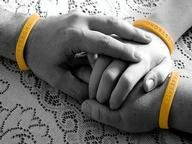Quiz Answer Key and Fun Facts
1. (Please read the interesting information as you go along with this quiz. It will guide you through some of the process of intraductal carcinoma -- breast cancer. Everybody's journey through cancer is different, depending on the type, location and severity. This account may not apply to your personal situation. Treatments and procedures are rapidly changing so ask questions about everything. My diagnosis, surgery, treatments and drug therapy dates began in December 2010.)
Having moved, I failed to notify my breast screening clinic. Three years later my physician sent me for a very important routine test for breast cancer. What was that called?
2. In all likelihood you will be called in for a repeat mammography and will have an ultrasound done if something is detected within your first mammogram. What is ultrasound (sonography) used for?
3. The results are in and it is cancer that has been detected and biopsied within your breast. What will the typical next step in the process of breast cancer treatment entail?
4. Once you have seen your oncologist to discuss your breast cancer and treatment options you might have a consultation with your surgeon next. If the decision to do surgery is made, which fairly common test may be required prior to your surgery date?
5. It is surgery day and you arrive very early because some other tests have to be done prior to the breast cancer surgery. What will the nuclear medicine experts, who will perform these tests, check for?
6. Another scan called a PET/CT (positron emission tomography and computerized tomography) scan is next on the agenda of pre-operative tests for breast cancer surgery. What is the purpose of this test?
7. After having had most of the pre-operative tests done because of my breast cancer I had to go to ultrasound. The procedure was called wire localization. What would the wire be used for in surgery?
8. It is time to be wheeled into the operating room for breast cancer surgery. In my case I was going to have a lumpectomy done. What is that?
9. Post-operative (after surgery) measures from breast cancer can take anywhere from two to six weeks of healing time. What must a patient start doing immediately after surgery, once they are awake and alert?
10. Once a patient is home immediately after breast cancer lumpectomy surgery, what should the patient be careful to NOT do?
11. Once healing has taken place more treatment is required after breast cancer surgery. Chemotherapy is one type of treatment. What does chemotherapy actually do?
12. The next step in the post-operative treatment of lumpectomy surgery, involves radiation therapy. One must be tattooed for this. Do you get to choose the tattoo?
13. What is a benefit of radiotherapy (radiation treatments) after breast cancer surgery?
14. Does a patient have to take medication after having lumpectomy surgery for breast cancer if they had estrogen receptor positive and progesterone receptor positive cancer?
15. Breast cancer affects a lot of people. Can children get breast cancer?
Source: Author
funnytrivianna
This quiz was reviewed by FunTrivia editor
CellarDoor before going online.
Any errors found in FunTrivia content are routinely corrected through our feedback system.

